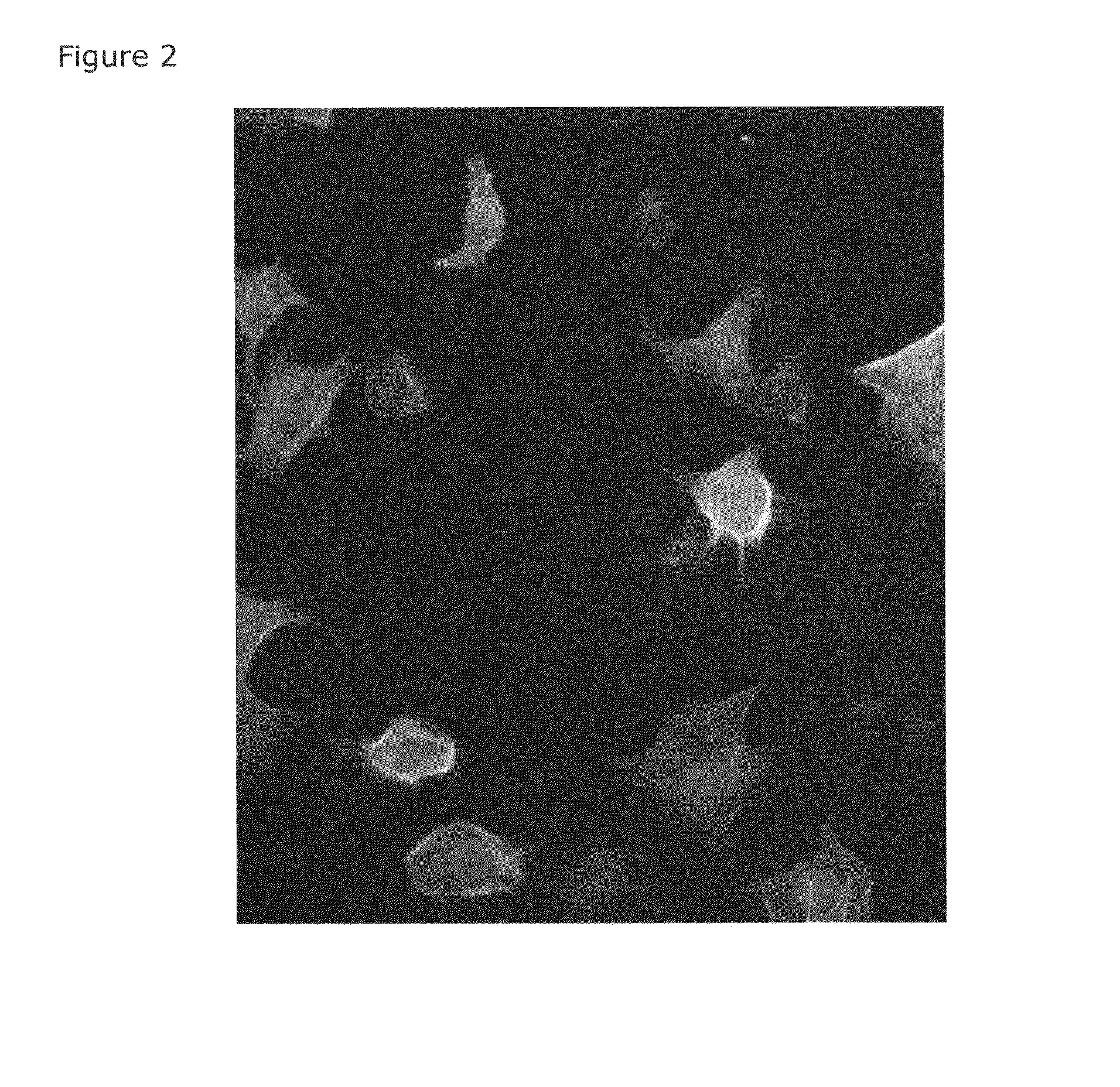Bioactive peptide for cell adhesion
a technology of cell adhesion and bioactive peptide, which is applied in the field of bioactive peptide for cell adhesion, can solve the problems of inability to commercially exploit the intact molecule as a cellular adhesive, and the size of the intact molecule does not allow for efficient and cost-effective commercial production
- Summary
- Abstract
- Description
- Claims
- Application Information
AI Technical Summary
Benefits of technology
Problems solved by technology
Method used
Image
Examples
example 1
[0056]FIG. 1 shows the results of studies comparing adhesion of multipotent mouse mesenchymal stem cells, 10T½, to uncoated plastic and to plastic coated with various substrates. Adhesion is measured by the cell proliferation assay CellTiter 96® AQueous Non-Radioactive Cell Proliferation Assay (MTS) sold by Promega, Inc. The CellTiter 96® AQueous Non-Radioactive Cell Proliferation Assay is a calorimetric method for determining the number of viable cells in proliferation, cytotoxicity or chemosensitivity assays. The CellTiter 96® AQueous Assay is composed of solutions of a tetrazolium compound (3-(4,5-dimethylthiazol-2-yl)-5-(3-carboxymethoxyphenyl)-2-(4-sulfophenyl)-2H-tetrazolium, inner salt; MTS) and an electron coupling reagent (phenazine methosulfate) PMS. MTS is bioreduced by cells into a formazan that is soluble in tissue culture medium. The absorbance of the formazan at 490 nm can be measured directly from 96 well assay plates without additional processing. The conversion of ...
example 2
[0059]Concentrated stocks of rat-tail type I collagen were diluted to designated concentrations in 0.02 N acetic acid and coated overnight on Maxisorp® 96 well plates at room temperature (RT). Poly-L-lysine (PLL), heat-denatured bovine serum albumin (BSA), the peptide of SEQ ID NO:1 conjugated to BSA (indicated in FIGS. 4-7 as “PLN4”) and a scrambled peptide from domain IV of perlecan having the amino acid sequence TGKSVGGSLIWPVRGQH (SEQ ID NO:4) conjugated to BSA (indicated in FIGS. 4-7 as “PLN4*) were diluted in 1× phosphate buffer saline (PBS) and also coated overnight on Maxisorp® 96 well plates at RT. The following day, the plates were washed three times with 1×PBS to remove any residue and blocked with 1% heat-denatured BSA for 1 hr at 37° C. Following blocking, plates were washed once with 1×PBS. Cells from various cell lines were harvested with 0.5 mM EDTA and collected by centrifugation. Pelleted cells were resuspended in serum-free RPMI 1640 and plated a...
PUM
| Property | Measurement | Unit |
|---|---|---|
| molecular weight | aaaaa | aaaaa |
| molecular weight | aaaaa | aaaaa |
| molecular weight | aaaaa | aaaaa |
Abstract
Description
Claims
Application Information
 Login to View More
Login to View More - R&D
- Intellectual Property
- Life Sciences
- Materials
- Tech Scout
- Unparalleled Data Quality
- Higher Quality Content
- 60% Fewer Hallucinations
Browse by: Latest US Patents, China's latest patents, Technical Efficacy Thesaurus, Application Domain, Technology Topic, Popular Technical Reports.
© 2025 PatSnap. All rights reserved.Legal|Privacy policy|Modern Slavery Act Transparency Statement|Sitemap|About US| Contact US: help@patsnap.com



